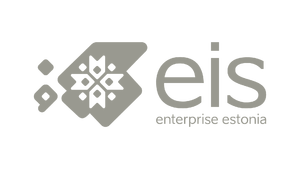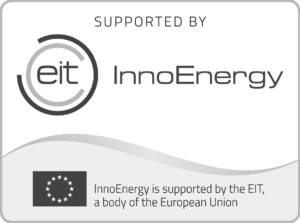22.08.2018
Avionix: aspiring to be a full-service provider in IT solutions
Avionix operates in the field of software development, but the aim of the company is to move towards full-stack development – providing hardware and infrastructure to host programs as well.
“We develop individual applications and focus on data – real-time data analysis and big data queries is our field. But we are also trying to expand our services and offer the whole infrastructure required to run these applications,” explains Kenneth Staub, one of the founders.“
Our experience ranges from simple database solutions, business intelligence and ecommerce solutions to complex, real-time big-data science projects. We have quite a lot of expertise with data visualization in real time. For example, we have a customer who has a database with over than 20 million entries, and we can search through all that data in a less than a second,” adds Dominic Staufer, co-founder.
Avionix has implemented projects in several areas, but big data and visualization are the common features. “For example, in the manufacturing process you produce a bunch of data – we can visualize it on dashboards and hang them somewhere in the production rooms, so you can have a quick overview about what is happening with the machines or where maintenance is needed. For a company in the finance sector we analysed finance data from their production and fed it into tools they could retrieve from audits. We utilize workflow management process optimization and add a touch of business inte-ligence in healthcare,” he adds.
Pilots in IT solutions
The founders of Avionix started their cooperation at the university where they both studied aviation engineering. Before engineering, Staufer had previously studied medicine – that makes him fluent in medical terminology, which can be a valuable asset for customers in the health care field. Eventually he chose engineering over medicine: “I needed another level of abstraction. At a technical level there is always a solution, as in healthcare you cannot always say that, which is kind of sad,” he says. Staub completed his degree later in systems and network engineering.
Two young pilots saw certain gaps and wanted to solve a problem in aviation: “Private pilots in general aviation often use an iPad for navigation. It is a good tool and has good market penetration within the pilot population. There were some weaknesses we wanted to fix, which were partially inspired by personal experience – Kenneth experienced instrument failure, during which all the instruments were dead and had no on-board electricity. In these cases, you have to react quickly, find a place to land the plane, preferably an airport. With separate navigation devices which are not dependant on the airplane navigation, it’s more convenient,” Staufer points out. “In general, it is much easier to have an app on iPad. It’s more user friendly compared to a map on paper and cheaper compared to a built-in navigation system. It was hard for the iPad to locate GPS in the air because it tended to overheat, especially in direct sunlight. As navigation apps are quite resource heavy, the battery life was limited,” Staub adds.
As a solution they designed a case for an iPad which featured a better GPS, a cooling fan and a battery. “We were quite successful at designing and finished the prototype. We proceeded to undertake the classic start-up process for founding a company and finding investors, and then we got some coaching at an incubator. The further we went, the more we realized that there were several unfavourable factors against us. So in the end, we decided to scrap the project. The niche for such a product was small, and the costs for final development and getting it production ready were high. We needed either very generous investors (we didn’t see them coming) or had to sell a lot of products (which was beyond our niche),” recalls Staub.
Although the project was withdrawn, it opened doors to new ideas. Since at that time they were using the company to help people around them who went into body leasing and software development, Staub and Staufer saw a need to expand the busi-ness. “We saw the demand for IT services in general – it turned out that the services are not needed only in Switzerland. Now we have customers from Switzerland, Germany and Estonia,” adds Staufer.
Adapt to change
The development of Avionix has been turbulent. The company was founded in 2015 in Switzerland. As the project didn’t work out as planned, they simply adjusted. “We’ve proven to be quite flexible. During the last four years we have quickly adapted, but we still find ourselves in the field of software development,” says Staub.
The main target groups for Avionix are medium-sized enterprises in general and those in different fields. “We have certain expertise in terms of processes in areas we have been working on, but still – every com-pany is different,” stresses Staub.
Avionix has clients from different fields, including healthcare and industry manufacturing. “In all these sectors there are stakeholders issuing compliance rules, and confidentiality plays a great role. We are not a start-up with a product we can easily pro-mote,” says Staub. “We typically find customers who discuss their non-disclosure agreements with us immediately: if we work together, we cannot talk about the project. That is also the reason we don’t have a big portfolio on our website,” he adds.
“We can approach German-speaking customers without having the language barrier or a need to translate,” Staub said. “We are focusing on specific technologies and investing heavily in building up expertise in the technology sector. For business intelligence projects we gather information that is available in different applications and bring them together in one visualisation, so that people can make decisions more easily. That sets us apart,” adds Staufer.
It is a challenge to find out what the customer wants and translate it into specification for software
“It is a challenge to find out what the customer wants and translate it into specification for software. This is quite an intensive and abstract process, but it also has kind of a personal touch – the process of getting to know the customer and understand their needs might take longer than development itself,” explains Staufer. “We don’t go to customers, telling what they need. It’s the other way around. They come to us with a general idea about how it is supposed to look and what the workflow will be. From there, it is our job to figure out how to do it and then do it,” he says.












